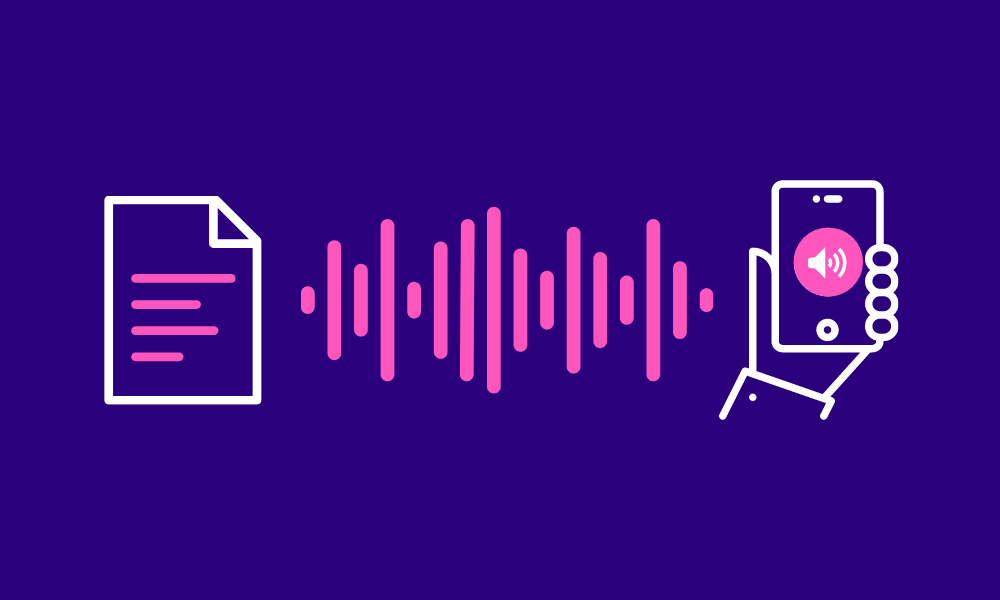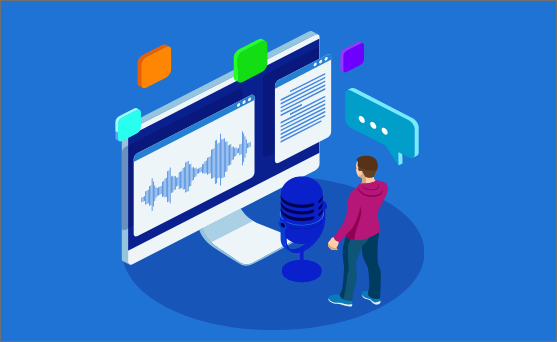Unveiling the Role of TTS in Enhancing Reading Comprehension

Enhancing Reading Comprehension: Insights from TTS Technology Research
In the quest to surmount the challenges faced by students with reading disabilities, text-to-speech (TTS) technology emerges as a beacon of hope, illuminating the path toward improved comprehension and learning. The intricate mosaic of TTS applications in educational settings has been subject to rigorous scrutiny, revealing that this technology is more than a tool—it is a transformative force capable of unlocking the potential within each learner. By bridging the gap between written text and audible speech, TTS not only accommodates diverse learning needs but also fosters an inclusive environment where all students have equal opportunities to thrive academically.
Renowned researchers like Sarah G. Wood and Richard K. Wagner have delved into the data, unearthing insights through a meta-analytic lens that scrutinize the impact of TTS on reading comprehension. Their work, pivotal in the junction of educational technology and special education, underscores the magnitude of TTS as not merely a technical innovation but an assistive cornerstone that adapts to the rhythms and nuances of student learning. As TTS technology continues to evolve, embracing advancements in AI and machine learning, its role in the classroom and beyond promises to expand, cultivating a future where every word read aloud is a step toward academic success.
| Topics | Discussions |
|---|---|
| Overview of Text-to-Speech in Education | An introductory exploration of how text-to-speech technology serves as an educational tool, enhancing reading experiences for students with disabilities. |
| "Does Use of Text-to-Speech and Related Read-Aloud Tools Improve Reading Comprehension for Students with Reading Disabilities? A Meta-Analysis" | A detailed analysis of the pivotal research by Sarah G. Wood et al., investigating the effects of TTS on reading comprehension in students with disabilities. |
| Quantitative Effects of Text-to-Speech on Learning | Examination of the empirical data from the meta-analysis that assesses the measurable impact of TTS on reading comprehension and learning outcomes. |
| Technical Quickstart: Programming TTS Integration | Guides and code samples for developers interested in integrating advanced TTS features into applications using popular programming languages. |
| Exploring Possibilities in Text-to-Speech Technology | Prospective outlook on the expanding horizons of TTS technology, including its novel applications in various sectors beyond education. |
| Common Questions Re: Text-to-Speech Technology | Answers to the most pressing questions about TTS technology, its software, devices that support speech conversion, and the transformative role of AI in TTS deployment. |
Overview of Text-to-Speech in Education
As we embark on a detailed exploration of text-to-speech (TTS) technology, it becomes imperative to acquaint ourselves with the terminology that shapes discussions in this innovative educational landscape. The glossary below is crafted not only as a key to unlock the complexities of TTS but also as a comprehensive reference that encapsulates the essence of this transformative technology. From the broad strokes of its applications to the minutiae of its functionality, these terms will illuminate the multifaceted role of TTS, serving as a beacon for both educators and technologists dedicated to enhancing learning experiences.
| Term | Definition |
|---|---|
| Text-to-Speech (TTS) | A technology that converts digital text into spoken audio, facilitating auditory reading experiences. |
| Reading Disabilities | Diverse conditions that interfere with an individual's ability to read, including dyslexia and other learning disorders. |
| Meta-Analysis | A statistical technique that amalgamates findings from multiple studies to arrive at consolidated conclusions about data. |
| Reading Comprehension | The ability to process text, understand its meaning, and integrate it with what the reader already knows. |
| Read-Aloud Tools | Software and devices designed to orally read text content to a user, often part of assistive technology. |
| Educational Technology | The use of technology to enhance teaching, learning, and educational administration. |
| Special Education | Tailored educational services designed to meet the unique needs of students with learning differences and disabilities. |

"Does Use of Text-to-Speech and Related Read-Aloud Tools Improve Reading Comprehension for Students with Reading Disabilities? A Meta-Analysis"
In their landmark paper, Sarah G. Wood, Jerad H. Moxley, Elizabeth L. Tighe, and Richard K. Wagner present a comprehensive meta-analysis aiming to quantify the benefits provided by TTS and read-aloud tools for students with reading disabilities. Published in the respected "Journal of Learning Disabilities" and finessed into its final form in 2018, this seminal piece of research dissects a myriad of studies conducted prior to its own January 2017 online availability and highlights critical findings that underscore the potential of these auditory tools to enhance comprehension skills among challenged readers.
The compilation and examination of data from varying investigative efforts lay the groundwork for a nuanced understanding of how TTS can act as a pivotal learning support. While the detailed affiliations of the authors with universities or research institutions are not specified, their methodical approach contributes significantly to the educational technology and special education fields. By meticulously analyzing studies that cover a diverse span of contexts and tools, the researchers articulate a compelling case for the inclusion of TTS in educational strategies tailored to students with special needs.
Emerging from this study is a narrative that asserts the need for thoughtful implementation of TTS in classrooms across the globe. Teaching professionals might wield this research as a testament to the validity and necessity of read-aloud software—a technological ally in the universal quest to democratize education. The data not only confirm TTS's role in facilitating improved reading comprehension but also project a trajectory of continuous advancement and increased adaptability of this technology to the evolving pedagogical landscapes.
Quantitative Effects of Text-to-Speech on Learning
The in-depth meta-analysis within the realm of educational technology sheds light on the quantitative effects of TTS on learning, particularly for students with reading disabilities. The research systematically compiles and assesses data from various studies, providing a statistical backbone that supports the integration of TTS and read-aloud tools into the educational curriculum. By quantifying the results, the researchers present empirical evidence that bolsters the claim that TTS technology can indeed aid in the improvement of reading comprehension.
The data observed in these studies reveal that TTS has the potential to be more than merely a workaround for reading challenges; it can be a substantial augmentative tool, aligning with the cognitive processes involved in understanding and retaining information. The effectiveness of TTS is not uniform across all scenarios and is influenced by factors such as the context of usage, the nature of the text being read, and the individual needs of the students. The variability of these factors underscores the importance of a personalized approach when employing TTS as an educational support technology.
Moreover, these findings are not just statistically significant; they have practical implications for the design and delivery of educational content to students who face hurdles in traditional reading. The application of TTS can facilitate greater accessibility to learning materials, providing alternative pathways for students to achieve academic success. This quantitative analysis thus acts as a foundational piece for further research and for educators seeking data-driven justifications for the adoption of TTS in their teaching methodologies.
Technical Quickstart: Programming TTS Integration
Developing Text to Speech Applications in Python
Integrating TTS Features into Java Projects
import requests
response = requests.post(
'https://api.v6.unrealspeech.com/stream',
headers = {
'Authorization' : 'Bearer YOUR_API_KEY'
},
json = {
'Text': '''<YOUR_TEXT>''', # Up to 1,000 characters
'VoiceId': '<VOICE_ID>', # Scarlett, Dan, Liv, Will, Amy
'Bitrate': '192k', # 320k, 256k, 192k, ...
'Speed': '0', # -1.0 to 1.0
'Pitch': '1', # 0.5 to 1.5
'Codec': 'libmp3lame', # libmp3lame or pcm_mulaw
}
)
with open('audio.mp3', 'wb') as f:
f.write(response.content)Java, one of the most used programming languages in the world, offers integration with TTS through multiple APIs. One such example is the FreeTTS library, a speech synthesis system written entirely in Java. The following snippet demonstrates a simple text-to-speech example using FreeTTS:
const axios = require('axios');
const fs = require('fs');
const headers = {
'Authorization': 'Bearer YOUR_API_KEY',
};
const data = {
'Text': '<YOUR_TEXT>', // Up to 1,000 characters
'VoiceId': '<VOICE_ID>', // Scarlett, Dan, Liv, Will, Amy
'Bitrate': '192k', // 320k, 256k, 192k, ...
'Speed': '0', // -1.0 to 1.0
'Pitch': '1', // 0.5 to 1.5
'Codec': 'libmp3lame', // libmp3lame or pcm_mulaw
};
axios({
method: 'post',
url: 'https://api.v6.unrealspeech.com/stream',
headers: headers,
data: data,
responseType: 'stream'
}).then(function (response) {
response.data.pipe(fs.createWriteStream('audio.mp3'))
});Exploring Possibilities in Text-to-Speech Technology
Unreal Speech is redefining the boundaries of text-to-speech (TTS) technology with its API, promising cost reductions of up to 90%. For academic researchers and software engineers entrenched in the development of TTS applications, cost-efficiency paired with high-quality output is a game-changer. By offering a solution that is significantly cheaper than well-known competitors like Eleven Labs and Play.ht, and even established tech giants Amazon, Microsoft, and Google, Unreal Speech becomes a compelling choice for projects that demand a robust TTS service without the hefty price tag.
The advantage of such an API extends to game developers, educators, and content creators who require volume discounts for large-scale use. With an enterprise plan that includes 625 million characters for approximately 14,000 hours of audio each month, there is considerable potential for creating extensive voice-enabled experiences. For individuals and organizations working on a tight budget or those processing high volumes of text, such cost savings, coupled with quality, cannot be overstated.
Moreover, with features such as low-latency response times and an impressive 99.9% uptime, Unreal Speech supports real-time applications—a crucial aspect for software engineers developing interactive applications. As narrated by Derek Pankaew, CEO of Listening.com, switching to Unreal Speech not only reduced costs but also provided a superior listening experience, even at high processing volumes. This testimonial underscores the utility, reliability, and economic viability of Unreal Speech's TTS technology, solidifying it as an optimum choice across diverse professional domains.
Common Questions Re: Text-to-Speech Technology
What Software Solutions Drive Text to Speech?
Several software solutions are utilized to power text to speech, including cloud-based APIs like Google Text-to-Speech, Amazon Polly, IBM Watson Text to Speech, and other proprietary and open-source TTS engines that are specifically designed to convert text into lifelike audio in several languages.
Which Devices Are Capable of Converting Text into Speech?
Devices ranging from smartphones, tablets, computers, to standalone TTS devices and software platforms are all capable of converting text into speech. These tools are crucial for individuals with reading disabilities or those who require auditory reading support.
How Is AI Transforming Text-to-Speech Deployment?
AI is a pivotal factor in text-to-speech development, utilizing natural language processing and deep learning to produce voices that are increasingly natural and indistinguishable from human speech. AI-driven TTS can contextualize text, infuse emotional undertones, and adapt to user preferences, greatly enhancing the end-user experience.